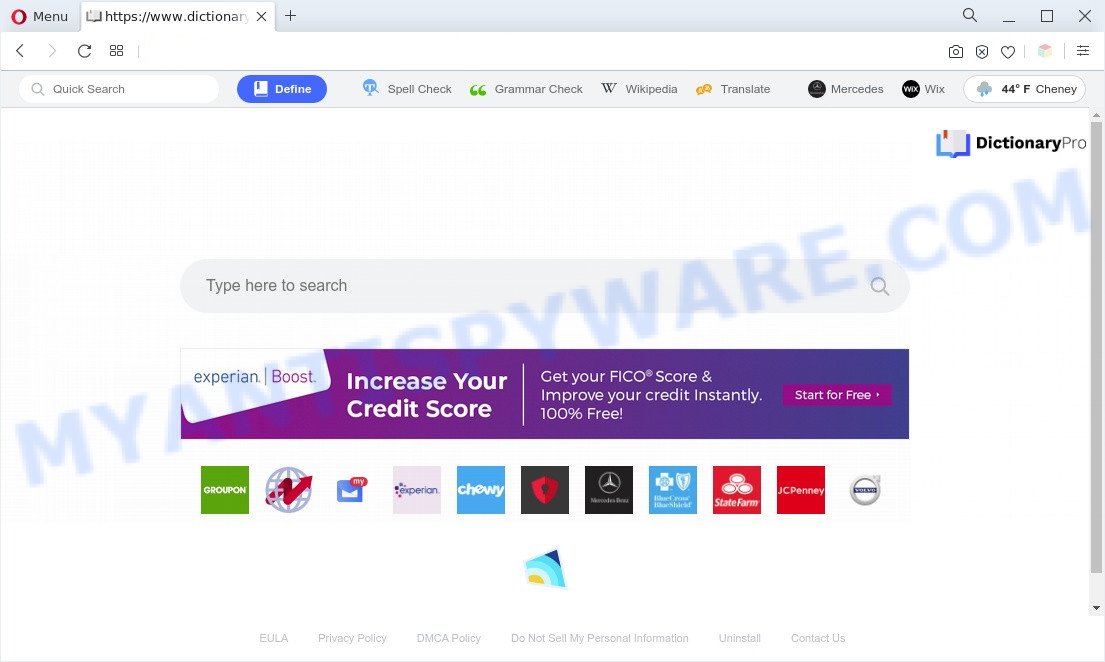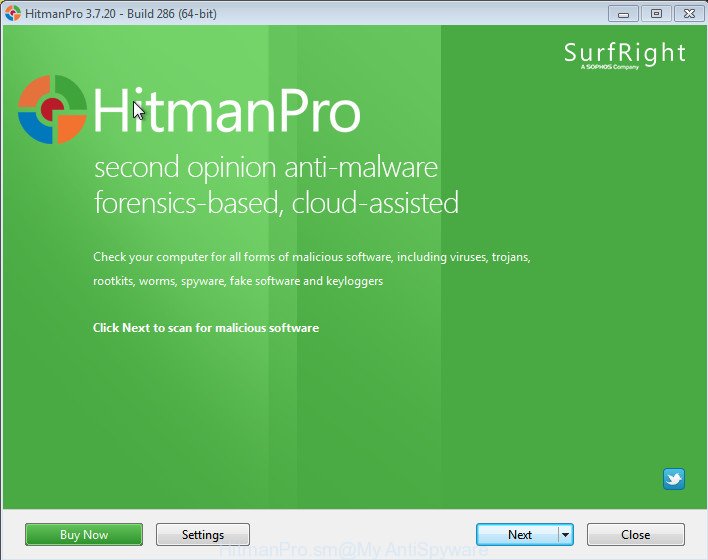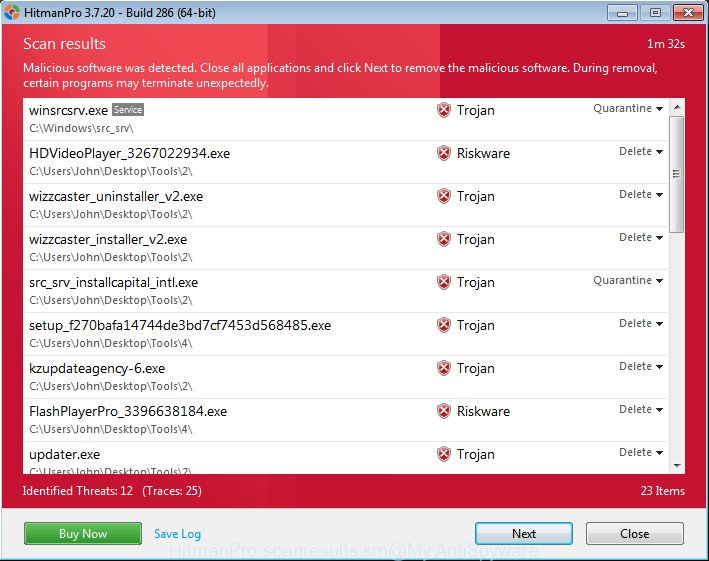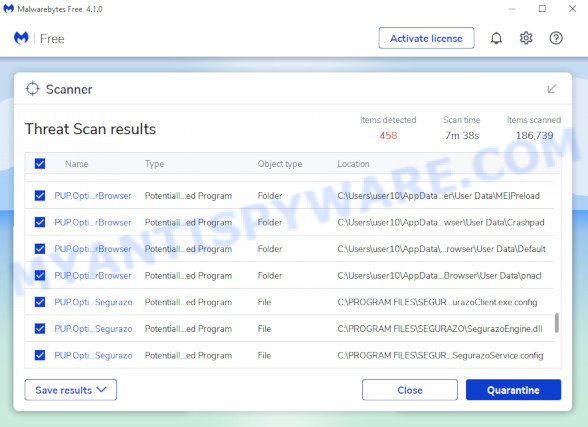According to security researchers, Dictionary Pro is a potentially unwanted program (PUP) from the category of Browser hijackers. Browser hijacker is a program or browser extension that can change your home page and search provider, redirect you to websites you never intended to visit, gather search queries and confidential information about you. In the blog post below you will find tutorial about how to return browser settings to their original defaults and fully get rid of Dictionary Pro from IE, Firefox, MS Edge and Google Chrome.

Dictionary Pro is a PUP (browser hijacker)
When you are performing searches using the internet browser that has been affected by Dictionary Pro, the search results will be returned from Yahoo Search. The developers of Dictionary Pro hijacker infection are most probably doing this to make advertisement money from the advertisements shown in the search results.

Unwanted search ads
Another reason why you need to remove Dictionary Pro is its online data-tracking activity. It can collect confidential data, including:
- IP addresses;
- URLs visited;
- search queries/terms;
- clicks on links and ads;
- internet browser version information.
Threat Summary
| Name | Dictionary Pro |
| Type | redirect virus, PUP, home page hijacker, search engine hijacker, browser hijacker |
| Affected Browser Settings | search engine, homepage, newtab page URL |
| Symptoms |
|
| Removal | Dictionary Pro removal guide |
How can Dictionary Pro get on your personal computer
Browser hijacker and PUPs such as Dictionary Pro usually spreads bundled with free programs that downloaded from the Internet. Which means that you need to be proactive and carefully read the Terms of use and the License agreement properly. For the most part, the Dictionary Pro hijacker infection will be clearly described, so take the time to carefully read all the information about the software that you downloaded and want to install on your PC system. In the Setup wizard, you should choose the Advanced, Custom or Manual installation mode to control what components and bundled software to be installed, otherwise you run the risk of infecting your machine with a PUP like the Dictionary Pro hijacker.
Therefore, the browser hijacker is quite dangerous. So, we suggest you remove it from your machine as quickly as possible. Follow the tutorial presented below to get rid of Dictionary Pro from the Google Chrome, IE, Mozilla Firefox and Microsoft Edge.
How to remove Dictionary Pro from personal computer
The Dictionary Pro is a browser hijacker infection that you might have difficulty in removing it from your machine. Happily, you’ve found the effective removal steps in this article. Both the manual removal way and the automatic removal way will be provided below and you can just choose the one that best for you. If you have any questions or need help then type a comment below. Read this manual carefully, bookmark it or open this page on your smartphone, because you may need to exit your web browser or restart your system.
To remove Dictionary Pro, execute the steps below:
- Manual Dictionary Pro hijacker infection removal
- Automatic Removal of Dictionary Pro hijacker
- How to block Dictionary Pro
- Finish words
Manual Dictionary Pro hijacker infection removal
Dictionary Pro is a browser hijacker that can change your web-browser search provider by default, start page and newtab page and redirect you to the web-pages which may contain lots of ads. Not every antivirus program can find and remove Dictionary Pro easily from the browser. Follow the step-by-step instructions below and you can remove browser hijacker infection by yourself.
Deleting the Dictionary Pro, check the list of installed applications first
We suggest that you begin the machine cleaning process by checking the list of installed applications and remove all unknown or dubious apps. This is a very important step, as mentioned above, very often the harmful applications such as adware and hijacker infections may be bundled with free applications. Remove the unwanted apps can get rid of the undesired ads or internet browser redirect.
Windows 8, 8.1, 10
First, click Windows button

Once the ‘Control Panel’ opens, press the ‘Uninstall a program’ link under Programs category as shown in the following example.

You will see the ‘Uninstall a program’ panel as displayed in the figure below.

Very carefully look around the entire list of programs installed on your PC system. Most probably, one of them is the Dictionary Pro browser hijacker. If you have many applications installed, you can help simplify the search of malicious apps by sort the list by date of installation. Once you have found a questionable, unwanted or unused application, right click to it, after that press ‘Uninstall’.
Windows XP, Vista, 7
First, click ‘Start’ button and select ‘Control Panel’ at right panel as displayed on the image below.

When the Windows ‘Control Panel’ opens, you need to click ‘Uninstall a program’ under ‘Programs’ as on the image below.

You will see a list of apps installed on your computer. We recommend to sort the list by date of installation to quickly find the applications that were installed last. Most probably, it is the Dictionary Pro hijacker. If you’re in doubt, you can always check the application by doing a search for her name in Google, Yahoo or Bing. When the application which you need to remove is found, simply press on its name, and then press ‘Uninstall’ as displayed in the following example.

Remove Dictionary Pro hijacker from Firefox
Resetting Mozilla Firefox web-browser will reset all the settings to their default state and will remove Dictionary Pro, malicious add-ons and extensions. Essential information like bookmarks, browsing history, passwords, cookies, auto-fill data and personal dictionaries will not be removed.
First, run the Firefox. Next, press the button in the form of three horizontal stripes (![]() ). It will display the drop-down menu. Next, click the Help button (
). It will display the drop-down menu. Next, click the Help button (![]() ).
).

In the Help menu press the “Troubleshooting Information”. In the upper-right corner of the “Troubleshooting Information” page click on “Refresh Firefox” button as displayed in the following example.

Confirm your action, press the “Refresh Firefox”.
Remove Dictionary Pro from Google Chrome
Reset Google Chrome settings can help you solve some problems caused by browser hijacker infection and remove Dictionary Pro from startpage, newtab and search engine. This will also disable malicious extensions as well as clear cookies and site data. However, your saved passwords and bookmarks will not be changed, deleted or cleared.
First launch the Google Chrome. Next, click the button in the form of three horizontal dots (![]() ).
).
It will open the Chrome menu. Choose More Tools, then click Extensions. Carefully browse through the list of installed addons. If the list has the extension signed with “Installed by enterprise policy” or “Installed by your administrator”, then complete the following steps: Remove Google Chrome extensions installed by enterprise policy.
Open the Google Chrome menu once again. Further, click the option called “Settings”.

The internet browser will open the settings screen. Another method to display the Chrome’s settings – type chrome://settings in the browser adress bar and press Enter
Scroll down to the bottom of the page and click the “Advanced” link. Now scroll down until the “Reset” section is visible, like below and press the “Reset settings to their original defaults” button.

The Google Chrome will open the confirmation dialog box as shown in the following example.

You need to confirm your action, click the “Reset” button. The web-browser will launch the process of cleaning. When it is finished, the web-browser’s settings including start page, newtab and search provider back to the values which have been when the Google Chrome was first installed on your PC system.
Remove Dictionary Pro hijacker from IE
The Internet Explorer reset is great if your browser is hijacked or you have unwanted add-ons or toolbars on your web-browser, which installed by a malware.
First, run the Microsoft Internet Explorer. Next, click the button in the form of gear (![]() ). It will open the Tools drop-down menu, press the “Internet Options” such as the one below.
). It will open the Tools drop-down menu, press the “Internet Options” such as the one below.

In the “Internet Options” window click on the Advanced tab, then press the Reset button. The Microsoft Internet Explorer will show the “Reset Internet Explorer settings” window as shown in the following example. Select the “Delete personal settings” check box, then press “Reset” button.

You will now need to reboot your computer for the changes to take effect.
Automatic Removal of Dictionary Pro hijacker
Anti Malware programs differ from each other by many features like performance, scheduled scans, automatic updates, virus signature database, technical support, compatibility with other antivirus apps and so on. We advise you run the following free programs: Zemana, MalwareBytes and Hitman Pro. Each of these programs has all of needed features, but most importantly, they can scan for the browser hijacker and delete Dictionary Pro from the Microsoft Internet Explorer, Google Chrome, MS Edge and Firefox.
Get rid of Dictionary Pro hijacker with Zemana Anti Malware
You can download and use the Zemana for free. This anti-malware utility will scan all the Microsoft Windows registry keys and files in your computer along with the system settings and web browser extensions. If it finds any malware, adware or malicious extension that is responsible for redirects to Dictionary Pro then the Zemana will remove them from your machine completely.
Zemana can be downloaded from the following link. Save it directly to your Microsoft Windows Desktop.
164814 downloads
Author: Zemana Ltd
Category: Security tools
Update: July 16, 2019
After downloading is done, close all programs and windows on your PC system. Double-click the install file named Zemana.AntiMalware.Setup. If the “User Account Control” dialog box pops up as on the image below, click the “Yes” button.

It will open the “Setup wizard” that will help you install Zemana AntiMalware on your computer. Follow the prompts and don’t make any changes to default settings.

Once installation is complete successfully, Zemana AntiMalware will automatically start and you can see its main screen as shown in the following example.

Now click the “Scan” button to perform a system scan with this tool for the Dictionary Pro hijacker. Depending on your PC, the scan can take anywhere from a few minutes to close to an hour.

As the scanning ends, Zemana will open a screen that contains a list of malicious software that has been found. Make sure to check mark the threats which are unsafe and then click “Next” button. The Zemana will delete Dictionary Pro browser hijacker. When disinfection is done, you may be prompted to reboot the personal computer.
Use HitmanPro to remove Dictionary Pro browser hijacker
All-in-all, HitmanPro is a fantastic tool to clean your PC system from any unwanted programs such as Dictionary Pro hijacker. The Hitman Pro is portable program that meaning, you do not need to install it to use it. Hitman Pro is compatible with all versions of MS Windows operating system from Windows XP to Windows 10. Both 64-bit and 32-bit systems are supported.
Download HitmanPro from the following link.
After downloading is complete, open the directory in which you saved it. You will see an icon like below.

Double click the Hitman Pro desktop icon. When the utility is started, you will see a screen such as the one below.

Further, click “Next” button to perform a system scan with this tool for the Dictionary Pro hijacker. As the scanning ends, HitmanPro will display a list of detected items as shown below.

Review the scan results and then press “Next” button. It will open a dialog box, press the “Activate free license” button.
How to delete Dictionary Pro with MalwareBytes
If you’re still having problems with the Dictionary Pro browser hijacker — or just wish to scan your computer occasionally for browser hijacker and other malware — download MalwareBytes. It is free for home use, and searches for and removes various undesired programs that attacks your computer or degrades machine performance. MalwareBytes can delete adware software, potentially unwanted applications as well as malicious software, including ransomware and trojans.

- First, click the link below, then click the ‘Download’ button in order to download the latest version of MalwareBytes Anti Malware.
Malwarebytes Anti-malware
327071 downloads
Author: Malwarebytes
Category: Security tools
Update: April 15, 2020
- Once the downloading process is complete, close all apps and windows on your PC system. Open a file location. Double-click on the icon that’s named MBsetup.
- Select “Personal computer” option and press Install button. Follow the prompts.
- Once install is done, press the “Scan” button . MalwareBytes Anti-Malware application will scan through the whole system for the Dictionary Pro browser hijacker. A scan can take anywhere from 10 to 30 minutes, depending on the number of files on your computer and the speed of your system. While the MalwareBytes AntiMalware (MBAM) tool is checking, you can see how many objects it has identified as being infected by malicious software.
- After the scan get finished, MalwareBytes Anti Malware will display a list of detected items. In order to delete all items, simply press “Quarantine”. Once disinfection is complete, you can be prompted to reboot your personal computer.
The following video offers a few simple steps on how to remove browser hijackers, adware software and other malicious software with MalwareBytes Anti-Malware (MBAM).
How to block Dictionary Pro
We advise to install an ad-blocking application which may stop Dictionary Pro and other unwanted web-sites. The ad-blocker tool like AdGuard is a program which basically removes advertising from the World Wide Web and stops access to malicious webpages. Moreover, security experts says that using ad blocking applications is necessary to stay safe when surfing the Internet.
- First, visit the page linked below, then press the ‘Download’ button in order to download the latest version of AdGuard.
Adguard download
26843 downloads
Version: 6.4
Author: © Adguard
Category: Security tools
Update: November 15, 2018
- After the download is finished, start the downloaded file. You will see the “Setup Wizard” program window. Follow the prompts.
- After the setup is finished, press “Skip” to close the installation application and use the default settings, or press “Get Started” to see an quick tutorial that will help you get to know AdGuard better.
- In most cases, the default settings are enough and you do not need to change anything. Each time, when you run your machine, AdGuard will launch automatically and stop undesired advertisements, block Dictionary Pro redirect, as well as other malicious or misleading web-pages. For an overview of all the features of the program, or to change its settings you can simply double-click on the icon named AdGuard, which can be found on your desktop.
Finish words
Once you have complete the guide outlined above, your system should be free from Dictionary Pro and other PUPs. The Microsoft Internet Explorer, Google Chrome, MS Edge and Mozilla Firefox will no longer display the Dictionary Pro web-site on startup. Unfortunately, if the steps does not help you, then you have caught a new hijacker, and then the best way – ask for help here.


















